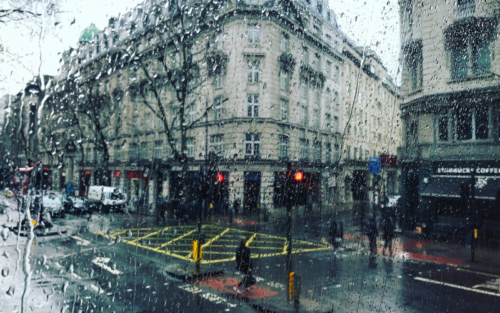
Thermal barrier coatings provide essential protection for building envelopes, but their waterproof capabilities often raise questions among property owners. Understanding how these specialized coatings interact with water is key to maintaining your structure’s integrity and optimizing energy efficiency.
How Thermal Barrier Coatings Respond to Water
Thermal barrier coatings like ThermaCote® offer more than just temperature regulation—they create a protective shield against moisture intrusion. These products form a continuous membrane that helps prevent water from penetrating building materials while still allowing your structure to breathe appropriately.
The ceramic composition creates microscopic layers that work together to repel liquid water while maintaining some degree of vapor permeability. This balance makes them ideal for protecting your building in varied climate conditions.
Professional-grade coatings undergo rigorous testing to measure their water resistance under different pressure and exposure scenarios, ensuring reliable performance on your property.
Water-Resistant Properties of Quality Thermal Barriers
High-performance thermal coatings provide significant water resistance through their specialized formulation. ThermaCote® weather barrier coating creates a seamless layer that repels water from exterior surfaces. This characteristic helps maintain the structural integrity of your building by:
- Preventing moisture penetration that leads to mold and mildew
- Protecting insulation from water damage that reduces its effectiveness
- Minimizing corrosion on metal substrates
- Reducing the risk of water-related deterioration in building materials
The water-resistant nature of ThermaCote® stems from its advanced acrylic resin system combined with ceramic particles. When properly applied, these components form tight chemical bonds that create a durable moisture barrier without compromising the coating’s thermal properties.
The Difference Between Water-Resistant and Waterproof
Many people use “waterproof” and “water-resistant” interchangeably, but these terms represent different levels of protection. A truly waterproof material prevents any water passage under all conditions, while water-resistant materials significantly slow or reduce water penetration.
Quality thermal barrier coatings like ThermaCote® fall into the highly water-resistant category.
They effectively repel water under normal conditions but maintain microscopic permeability that allows your building to release trapped moisture vapor—a feature that helps prevent internal condensation problems.
This intentional balance between water resistance and vapor permeability represents a significant advancement over older coating technologies that created completely sealed surfaces, which often led to moisture trapping and subsequent damage inside wall assemblies.
How ThermaCote® Handles Water Exposure
ThermaCote® creates a protective membrane that shields your building surfaces from rain, snow and environmental moisture. Its acrylic-based formulation adheres tightly to substrates, sealing small cracks and imperfections that might otherwise allow water infiltration.
When applied correctly to your property, this ceramic-based coating creates a continuous barrier that:
- Prevents liquid water from passing through the coating layer
- Maintains long-term water resistance even with weather exposure
- Protects building materials from moisture damage
- Contributes to the tight building envelope that improves energy efficiency
The coating expands and contracts with your building materials during temperature fluctuations without cracking or separating, maintaining its water-resistant integrity throughout seasonal changes and weather events.
Benefits of Water-Resistant Thermal Coatings
The water-resistant properties of high-quality thermal barrier coatings deliver several advantages for your property:
Extended Building Lifespan
Water intrusion represents one of the most destructive forces affecting your building. By creating a protective barrier that repels moisture, thermal coatings help prevent:
- Wood rot and structural deterioration
- Corrosion of metal components
- Freeze-thaw damage in masonry
- Insulation degradation
According to industry estimates, moisture damage accounts for billions in repair costs annually. When you protect your building with effective water-resistant barriers, you’ll typically see significantly reduced deterioration rates and longer service intervals between major maintenance projects.
Improved Energy Efficiency

Wet insulation loses much of its thermal resistance value. By keeping your insulation dry, thermal barrier coatings maintain optimal energy efficiency. ThermaCote®’s weather barrier properties help your building envelope perform at peak functionality year-round.
Laboratory testing demonstrates that even small amounts of moisture can reduce insulation R-values by 40% or more. The water-resistant properties of thermal coatings help preserve the designed thermal performance of your building systems, resulting in consistent energy savings and improved occupant comfort.
Reduced Maintenance Costs
Preventing water damage translates directly to lower maintenance expenses for you. Buildings protected with water-resistant thermal barriers require fewer repairs related to moisture issues like peeling paint, warped materials or water stains.
You’ll likely experience significant reductions in maintenance needs after application of quality thermal barrier coatings. The preventive nature of these systems addresses moisture problems before they develop into costly structural issues for your property.
Application Considerations for Maximum Water Resistance
When you’re investing in thermal barrier protection for your property, proper application is essential to achieve maximum water resistance. Professional installation ensures that ThermaCote® performs to its full potential, protecting your building from moisture damage while maintaining its energy-efficient properties.
Key application factors include:
- Proper surface preparation to remove contaminants
- Application during appropriate weather conditions
- Correct coating thickness per manufacturer specifications
- Special attention to joints, seams and transitions between materials
Professional applicators certified by ThermaCote® receive specialized training to address these critical factors, ensuring maximum water resistance and thermal performance for each installation.
Real-World Performance of ThermaCote®
ThermaCote® has demonstrated exceptional water-resistant properties across various applications for over 30 years. As a leader in weather barrier and protective coatings, ThermaCote® provides reliable moisture protection while delivering energy efficiency benefits.
The product’s water-resistant capabilities make it particularly valuable for:
- Coastal buildings exposed to high humidity and salt spray
- Structures in regions with heavy rainfall
- Buildings with complex exterior features that might trap water
- Areas where moisture-related issues have occurred previously
You can identify if your building would benefit from ThermaCote®’s water-resistant properties by looking for signs of moisture problems like condensation on windows, musty odors, or visible water stains. Even buildings without obvious issues may experience energy loss through micro-cracks that allow moisture penetration.
Case studies from diverse climate zones have documented ThermaCote®’s ability to maintain its water-resistant properties even in extreme weather conditions, from hurricane-prone coastal regions to areas with heavy seasonal precipitation.
Protecting Your Investment with ThermaCote®
Building envelopes must be well-designed and expertly constructed to provide long-term climate control, support and aesthetic finishes. ThermaCote® can protect insulation and other building envelope components from energy loss and exposure to the elements.
Contact our team today to learn more about how ThermaCote® can improve your structure’s building envelope with its high-performance, water-resistant thermal barrier coating.
Frequently Asked Questions
How long does ThermaCote® maintain its water resistance?
ThermaCote® weather barrier coating maintains its water-resistant properties for many years when properly applied and maintained. The acrylic-based formula resists weathering and UV degradation, allowing it to provide continuous moisture protection throughout its service life.
Can ThermaCote® be applied over existing water damage?
Surfaces must be properly prepared before ThermaCote® application, which includes addressing existing water damage. The substrate should be clean, dry and structurally sound to achieve optimal adhesion and performance.
Does ThermaCote® thermal barrier coating work on all building materials?
Yes, ThermaCote® can be applied to various substrates, including concrete, metal, wood, masonry and most existing coatings. Its versatility makes it suitable for comprehensive building envelope protection across different construction types.
Will ThermaCote® crack or peel when exposed to water?
When properly applied, ThermaCote® maintains excellent adhesion even with regular water exposure. Its flexibility allows it to accommodate normal building movement without cracking or peeling, maintaining the water-resistant barrier.
How does ThermaCote® compare to traditional waterproofing methods?
Unlike some traditional waterproofing systems that create an impermeable barrier, ThermaCote® provides high water resistance while allowing microscopic vapor transmission. This balance helps prevent trapped moisture problems while still protecting against liquid water infiltration.

